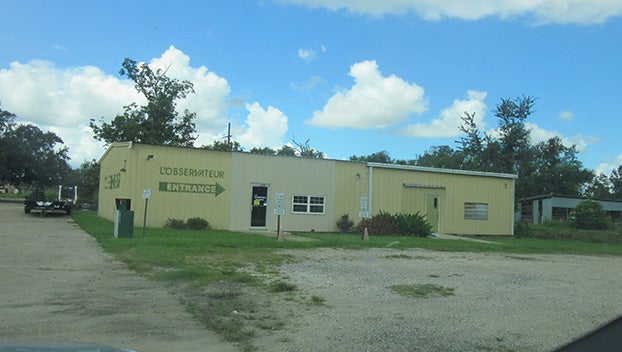Forecasters predicting ‘average’ hurricane season
Published 12:00 am Wednesday, June 3, 2009
By ROBIN SHANNON
L’Observateur
LAPLACE — Although the first tropical disturbance of the 2009 Atlantic hurricane season formed and dissipated four days before the season even began, hurricane forecasters are expecting an “average” or “near normal” year for named storms.
Meteorologists from the National Oceanographic and Atmospheric Administration (NOAA) predict a 70 percent possibility that this season would experience nine to 14 named storms with four to seven of those storms becoming hurricanes. The forecasters believe that three of those hurricanes could become classified as major hurricanes.
Meanwhile, Dr. William Gray and his team of forecasters from Colorado State University are predicting 12 named storms, six hurricanes and two major hurricanes. The Colorado forecasters are calling for a 54 percent chance of a storm striking somewhere along the U.S. coastline, a 32 percent chance that a storm will affect the East Coast and Florida peninsula and a 31 percent chance that a storm would affect the Gulf Coast from Florida westward to Brownsville, Texas.
Those same forecasters have said, however, that those predictions still come with a few question marks. There is still much debate on whether the effects of global warming influences hurricane formation. Meteorologists from NOAA have said they have identified several factors, including the extent of rainfall in Africa and the presence or absence of El Nino conditions in the Pacific, that help them predict the intensity of a hurricane season ahead of time, but there is still a greater degree of uncertainty this year than in years past.
With all the uncertainty that surrounds hurricane season, what can and should be done to prepare ahead of time? Officials with the LSU AgCenter have provided a wealth of information on their Web site for those who still may need a plan of attack. LSU AgCenter spokesperson Pat Skinner said it is best not to wait until the last minute.
“When a storm hits, you may be able to stay at home, or you may have to evacuate and find yourself spending the night or several nights in a car or a shelter,” said Skinner. “It is important to know what you need for any situation so that you can make plans when the time comes.”
When a storm threatens the Gulf Coast, vital hurricane supplies quickly become harder to find the longer you wait to purchase them. Skinner said it is important to reasonably stock up on batteries, flashlights, water and non-perishable food now before the threat is severe and stores begin selling out and closing up shop.
“You could be housebound for several days without power or potable water,” said Skinner. “That’s why it is important to gather what you’ll need to survive such an event now while it is early in the hurricane season.”
Other recommendations from the LSU AgCenter web site include:
– Updating phone numbers, addresses, meeting location and priorities in your family’s disaster plan and make sure everyone is aware of the plan.
– Check and refresh your stash of food, water and medications. Keep enough on hand to last through the storm and its aftermath.
– In addition to batteries and flashlights, make sure you have items such as lanterns and lantern fuel, matches, insect repellant, first-aid kits, hand sanitizers, ice, battery-powered radios and other necessities for primitive living.
– Collect all personal items, medical records, insurance information, and any other important paperwork you may need if you have to leave. Make sure you have updated identification and a stash of emergency cash or credit cards.
More information on storm prep can be found at the LSU AgCenter Web site at www.lsuagcenter.com.





